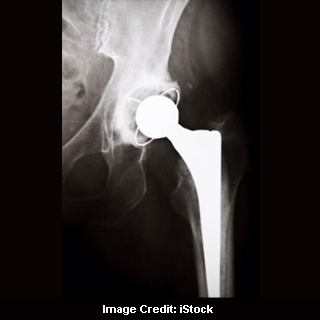
Wear and tear in a joint replacement can apparently create tiny bits of debris that cause local inflammation and pave way for bone loss. Then, the implant may become loose and set the stage for failure. Since it’s difficult to detect in early stages, the treatment allegedly comes too late. By the time pain or clear radiographic evidence is reported, considerable bone loss has already occurred. Apparently, this damage cannot be restored easily.
In order to offer an early diagnostic tool for implant failure, Dong Wang and colleagues from the University of Nebraska Medical Center and the Hospital for Special Surgery of New York crafted a polymer-based system. This system can be purportedly employed for imaging the inflammation that is linked with the wear debris. After testing the imaging agent in mouse bone, it was asserted that the early stages of bone loss can cause a joint implant to become loose. Investigators have also laid hands on an anti-inflammatory drug that can seemingly treat inflammation and bone loss within the early stages of wear.
The research is published in the ACS journal Molecular Pharmaceutics.
